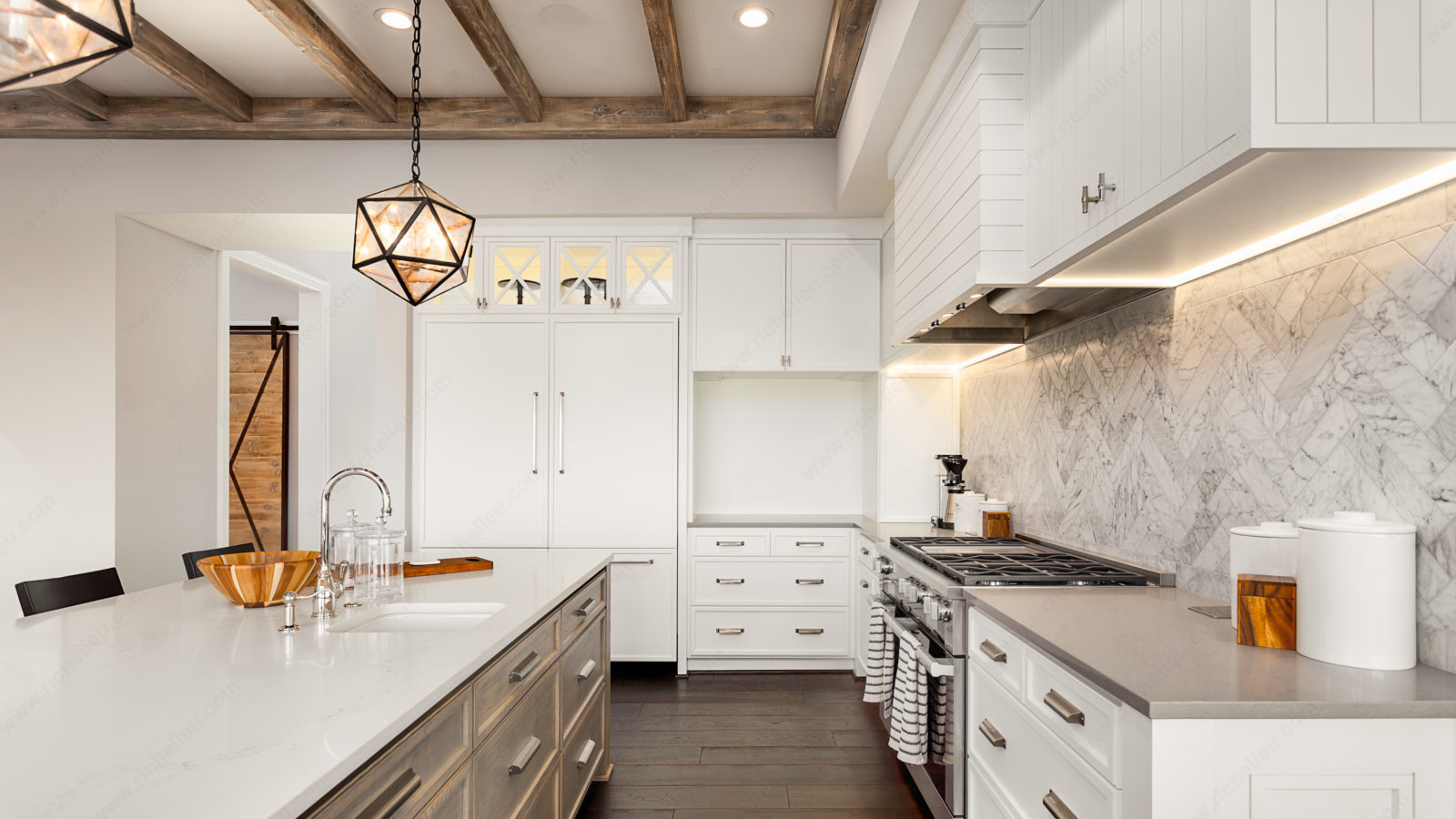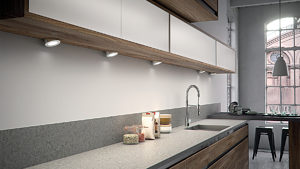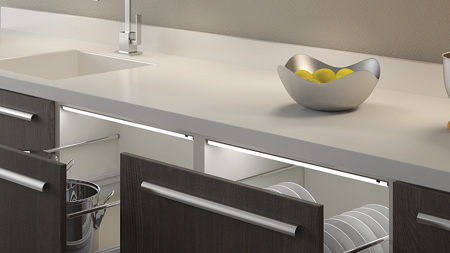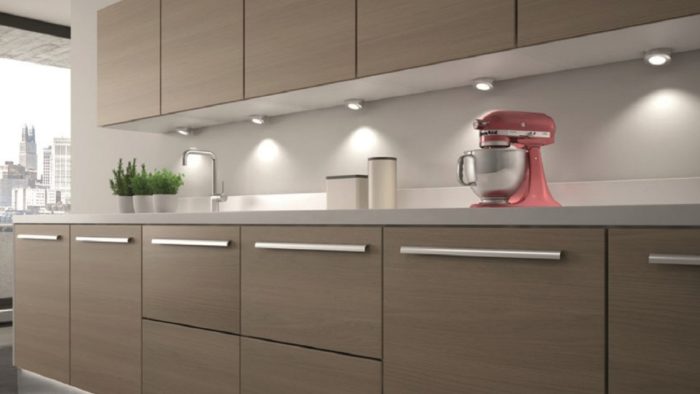Atom LED Light 3 W, 24 V
Richelieu Makes it Easy to Plan Ahead:
HOW TO MAKE AN IMPACT WITH INTERIOR LIGHTING
Today, with so many different interior lighting options to choose from, you can create a lighting plan for every room in the house guaranteed to make it shine.
Whether for the kitchen, bathroom, closet, bedroom or home office, the more layers of lighting incorporated into a space, the more functional and visually interesting it tends to be.
Plan task lighting first to give you targeted light where you need it most, then add accent lighting to create focal points to add style and impact. Complement with ambient lighting last to fill in the gaps with just the right amount of general light.
Task Lighting Illuminates a Specific Work Area
Often overlooked, task lighting is critical, especially in the kitchen for safety reasons as it helps to improve concentration and increase accuracy, so it is important to plan it first and install it in the right spots. As task lighting is used to provide focused illumination for a specific task or purpose, you will need to know how the space will be used.
With this direct form of lighting there should be no shadows or reflections and the level of light should be matched to the particular function. A good rule of thumb is to put in a little more lighting than you think is necessary.
Install Under-Cabinet or Under-Shelf Lighting for Well-Lit Countertops
Installing recessed puck lights, surface-mounted lights or aluminum profiles with strips of LED lighting underneath a shelf or a row of wall cabinets provides direction task lighting and eliminates shadows thrown by overhead lights to create a nicely diffused, uniform light projection with a minimum of reflected glare. In the kitchen or bathroom, it provides a well-lit counter space devoted to meal preparation where you can easily read recipes. In a home office or living room, it illuminates the perfect space to do work or pay bills.
Brighten Up Cabinet and Drawer Interiors
Lighting up the inside of cabinets and drawers is a great way to ensure that you always see clearly what’s inside. Several options are available with motion sensors that turn the light on automatically when a door or drawer is opened and turns the light off when closed.
From a style standpoint, interior cabinet lighting can also add elegance when used inside glass- or open-front cabinets by showcasing the items being stored by putting them on display. You will be able to see within and add upscale grace to the kitchen. This soft lighting also provides extra safety and security at night.
Accent Lighting Creates Focal Points
Planning for this type of lighting starts with considering what you want to accent. Create a glamorous effect with a soft halo of light by installing lighting under bookcase shelves to display treasured items or give children’s artwork the gallery treatment by creating an art gallery with frames on a kitchen wall and accent lighting each piece.
Toe Kick Lighting
One of the latest trends is adding LED strip lighting to the top of the toe kick. It is an elegant way to accent the space and show scale while providing a subtle ambient light at night. Take note that if the floors are high gloss, you may want to add an aluminum profile over the tape lights to diffuse the light better. Also, consider running these lights on a separate switch for the added flexibility of turning them on and off as needed.
Above Cabinet Lighting
Lighting above the cabinets can both accentuate a particular element of design or add subtle ambient lighting to the kitchen or a space in general. Referred to as uplighting, this effect can be accomplished easily with strip lights. If the upper cabinets go up to the ceiling, consider adding a channel to inset the strip lights. Also consider running these lights on a separate switch.
Ambient Lighting Sets the Mood
Similar to sunshine, ambient lighting creates a lovely warm atmosphere and gives a space a mellow glow. This type of lighting is particularly beautiful in a kitchen where it creates a base level of lighting, especially when natural light needs a boost. Recessed puck lights can provide comfortable, glare-free lighting that is balanced evenly throughout the room.
Combine all three layers of light from task to accent to ambient with the right lighting fixtures and you’ve got the winning combination for lighting layout design success.
The Finishing Touch
As important as it is to choose the right lighting fixtures, you should also explore lighting control options. Consider dimmer switches with touch-technology that enhance any design. Having as many light fixtures as possible on dimmers gives an added convenience to homeowners allowing them to select the level of intensity for each type of light depending on the activity such as cooking, dining or entertaining.
Architectural Lighting
Artistic and creative, architectural lighting, also called decorative lighting, provides character to the overall design of a space. This type of lighting is more modern and is rising in popularity with homeowners looking to add dimension to their interior lighting plan.
Just like sculpting with light, LED strip lights can be used to create an interesting pattern on the ceiling or a wall for added visual interest. Go for a modern minimalist look by using tape lights to backlight raised metallic or ceramic tiles of varying heights. You can even use colored lights for a playful effect. This type of lighting becomes a work of art. Begin by deciding the kind of mood you want to evoke and where you want it. Then, let your creativity guide you.
For more information on lighting designs and considerations on installation, learn more here:








































